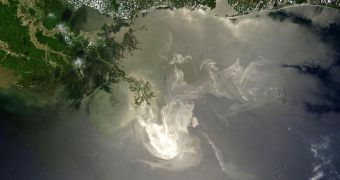Officials at NOAA announced today that they have just reopened more than 2,927 square miles of Gulf of Mexico waters to commercial and recreational fishing.
The reopened portion is located in waters off the coasts of eastern Louisiana, directly south and southwest of East Bay. Since July 22, NOAA has carried out 8 revisions of the previously-closed area.
Before deciding to allow commercial and leisure fishermen back into these waters, experts at NOAA had talks with colleagues from the US Food and Drug Administration (FDA), and with representatives from all Gulf states.
“Today’s reopening is great news for fishermen and the seafood industry in Louisiana,” said in a statement the US Commerce Secretary, Gary Locke.
“We look forward to reopening more federal waters, as this provides greater access to commercial and recreational activities, and continues to build consumer confidence in Gulf seafood,” he added.
“NOAA is working to protect public safety while minimizing harm to the fishing industry. We are confident that seafood caught in this area is, and will continue to be, free from contamination,” says NOAA Administrator Jane Lubchenco, PhD.
She is also the US under secretary of commerce for oceans and atmosphere. The expert adds that the reopened area covers 1 percent of federal waters in the Gulf, and 11 percent of the current closed area.
The Deepwater Horizon semi-submersible drilling rig, which operated only tens of miles south of the coasts of Louisiana, suffered a large explosion on April 20.
Eleven crew members are assumed dead, and all rescue efforts aimed at finding them failed. On April 22, the rig sunk into the waters of the Gulf, in spite of the fact that emergency response ships were on-site, evacuating workers, and pouring water on the platform.
With the collapse of the Horizon, the pipes that carried the oil from a depth of 5,000 feet (1,500 meters) broke. The valves designed to stop the oil flow in such an instance malfunctioned, and millions of barrels of crude have since spilled in the water.
NOAA has been working with the FDA and the US Environmental Protection Agency (EPA) ever since, it analyzing which areas still exhibit risks of contamination, and which can be reopened.
“The remaining closed area now covers 23,360 square miles, or about 10 percent of the federal waters in the Gulf. The boundary of the fishery closure has changed 29 times after it was first instituted on May 2,” NOAA says in a press release.

 14 DAY TRIAL //
14 DAY TRIAL //